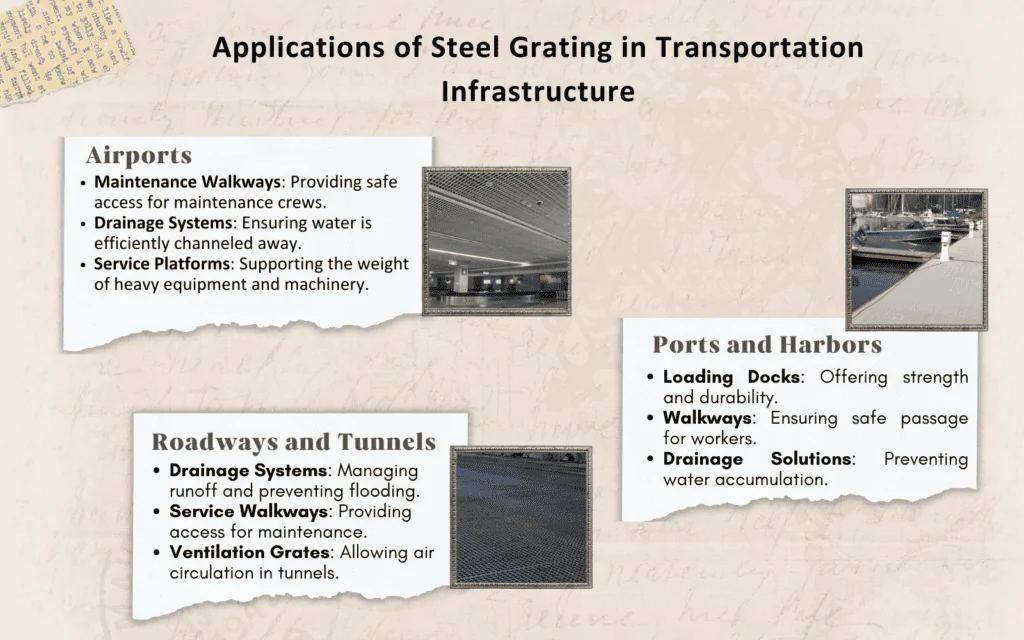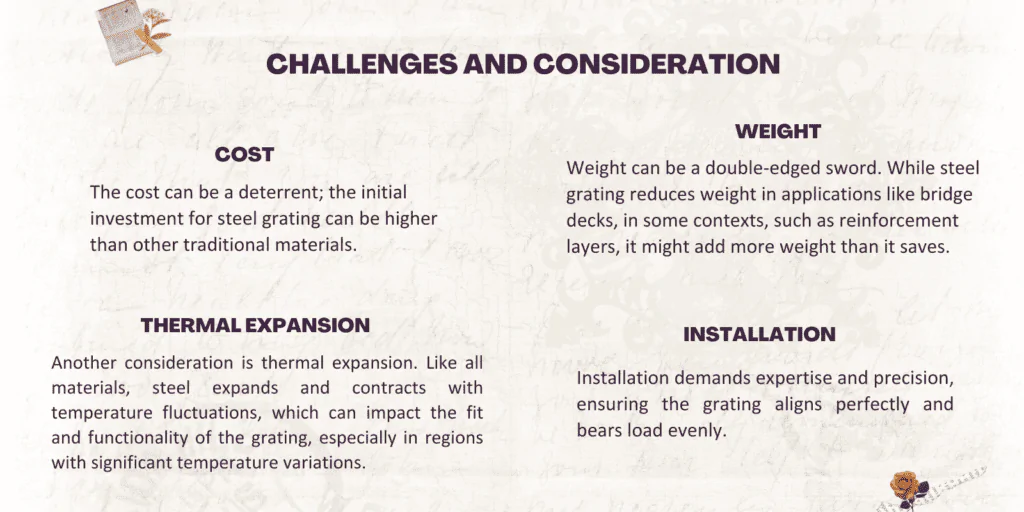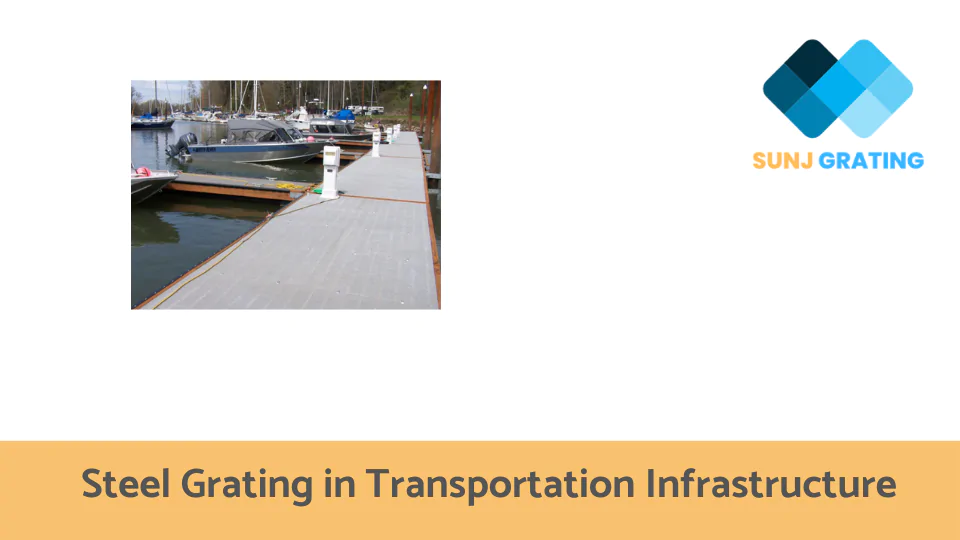Have you ever wondered how our transportation infrastructure remains so resilient, even under the constant stress of heavy traffic and environmental factors? What’s the secret behind the durability and efficiency of our bridges, railways, and airports? The answer lies in a component that might not immediately come to mind: steel grating.
Steel grating plays a pivotal role in transportation infrastructure. It provides the strength and durability needed to withstand the daily demands of transportation, ensuring safety and longevity. From bridge decks to railway platforms, steel grating’s versatility makes it an indispensable part of modern infrastructure.
As you delve deeper into this article, you’ll discover the intricacies of steel grating and its profound impact on our daily commutes. So, buckle up and get ready for an enlightening journey into the world of steel grating in transportation infrastructure.
What is Steel Grating?

Steel grating is a composite of intersecting steel bars and crossbars, meticulously arranged and fused to form a grid-like structure. This unique design, which combines strength with open space, has made it a sought-after material in various industries, especially transportation. The open spaces allow for easy drainage, ventilation, and in some cases, light penetration, while the steel framework ensures durability and strength.
Types of Steel Grating
There are several types of steel grating, each with its unique manufacturing process and application:
| Welded Grating | As the name suggests, this type involves fusing the bearing bars and crossbars together at their contact points. |
| Pressure-locked Grating | The crossbars are set into pre-cut slots on the bearing bars and then locked into place using hydraulic pressure. |
| Riveted Grating | This involves riveting the crossbars to the bearing bars, providing added durability. |
Key Properties
Steel grating is renowned for its
- Durability: It can withstand heavy loads and prolonged use.
- Strength: Its interlocking design provides exceptional load-bearing capabilities.
- Versatility: Suitable for various applications due to its customizable nature.

Historical Context
The inception of steel grating in transportation can be traced back to the early 20th century. Initially recognized for its unparalleled strength and durability, it soon became an integral component in infrastructure projects. As transportation networks expanded and modernized, the design and application of steel grating evolved in tandem.
Over the decades, advancements in manufacturing techniques and material science have refined steel grating’s properties, making it more resilient and adaptable. From its rudimentary use in early railway platforms to its sophisticated applications in modern airports and bridges, steel grating has consistently proven its worth, adapting to the ever-evolving demands of the transportation sector.
Applications of Steel Grating in Transportation Infrastructure
| Bridges | Railways |
| Reduced Weight It offers strength without the weight of solid surfaces. | Slip Resistance The textured surface prevents slips, especially in wet conditions. |
| Improved Drainage The open design allows water to flow through, preventing accumulation. | Durability It can handle constant foot traffic and weight of equipment. |
| Increased Traction The grid-like structure provides better grip, reducing skidding. |

Advantages of Using Steel Grating in Transportation Infrastructure

Durability and Longevity
It resists wear, corrosion, and environmental damage. Its durability and longevity ensure that structures remain functional and safe for extended periods, resisting wear, corrosion, and environmental damage.
Safety
Its design minimizes slip hazards. From a safety perspective, steel grating’s design minimizes slip hazards, especially in wet conditions, making it ideal for pedestrian-heavy areas like railway platforms and airport terminals.
Maintenance
Requires minimal upkeep and is easy to clean. Maintenance is another area where steel grating shines. Its open design ensures it doesn’t accumulate debris, and any cleaning or upkeep required is straightforward.
Aesthetic Appeal
It gives a sleek, modern look to infrastructure. Aesthetically, steel grating imparts a modern and industrial look to infrastructure, aligning with contemporary architectural trends.
Environmental Benefits
Promotes efficient water drainage. From an environmental standpoint, its design promotes efficient water drainage, mitigating issues like waterlogging and flooding, which can be detrimental to transportation infrastructure.
Challenges and Consideration

Conclusion
Steel grating’s role in shaping modern transportation infrastructure cannot be understated. Its unique combination of strength, durability, and versatility has made it an irreplaceable component in many projects. As transportation needs continue to evolve, so will the applications and innovations surrounding steel grating, ensuring it remains at the forefront of infrastructure development.


